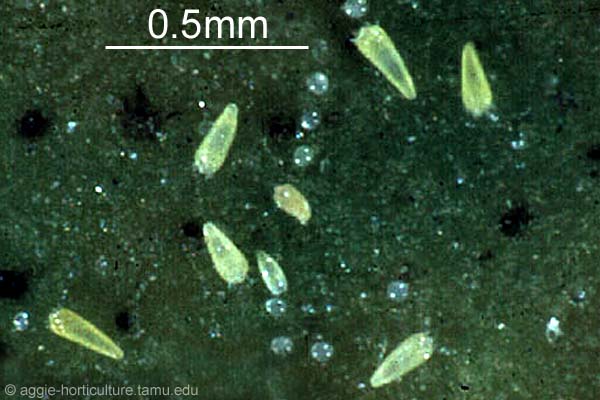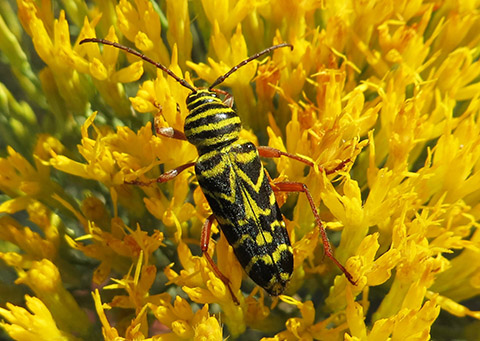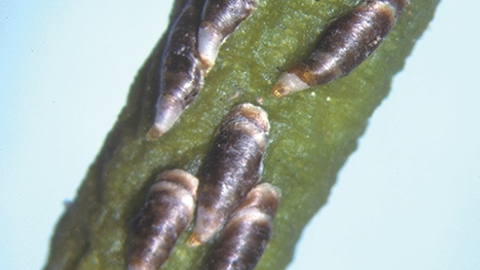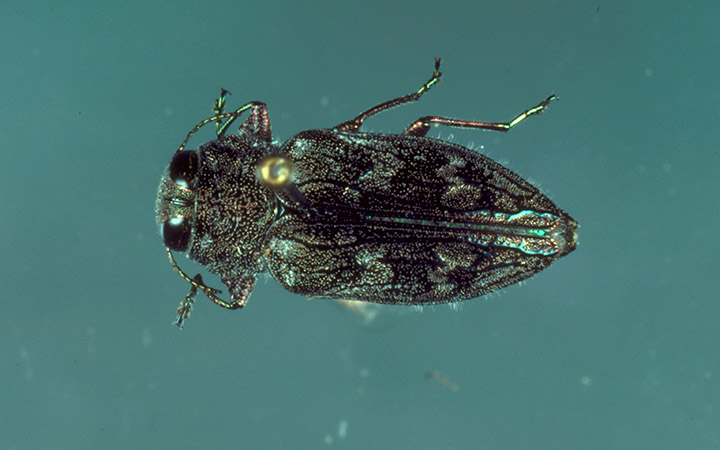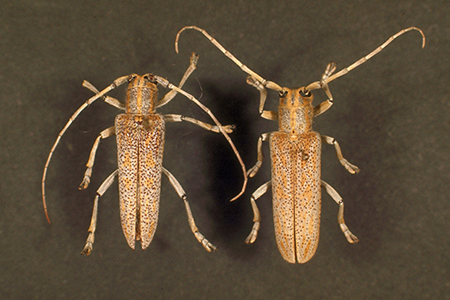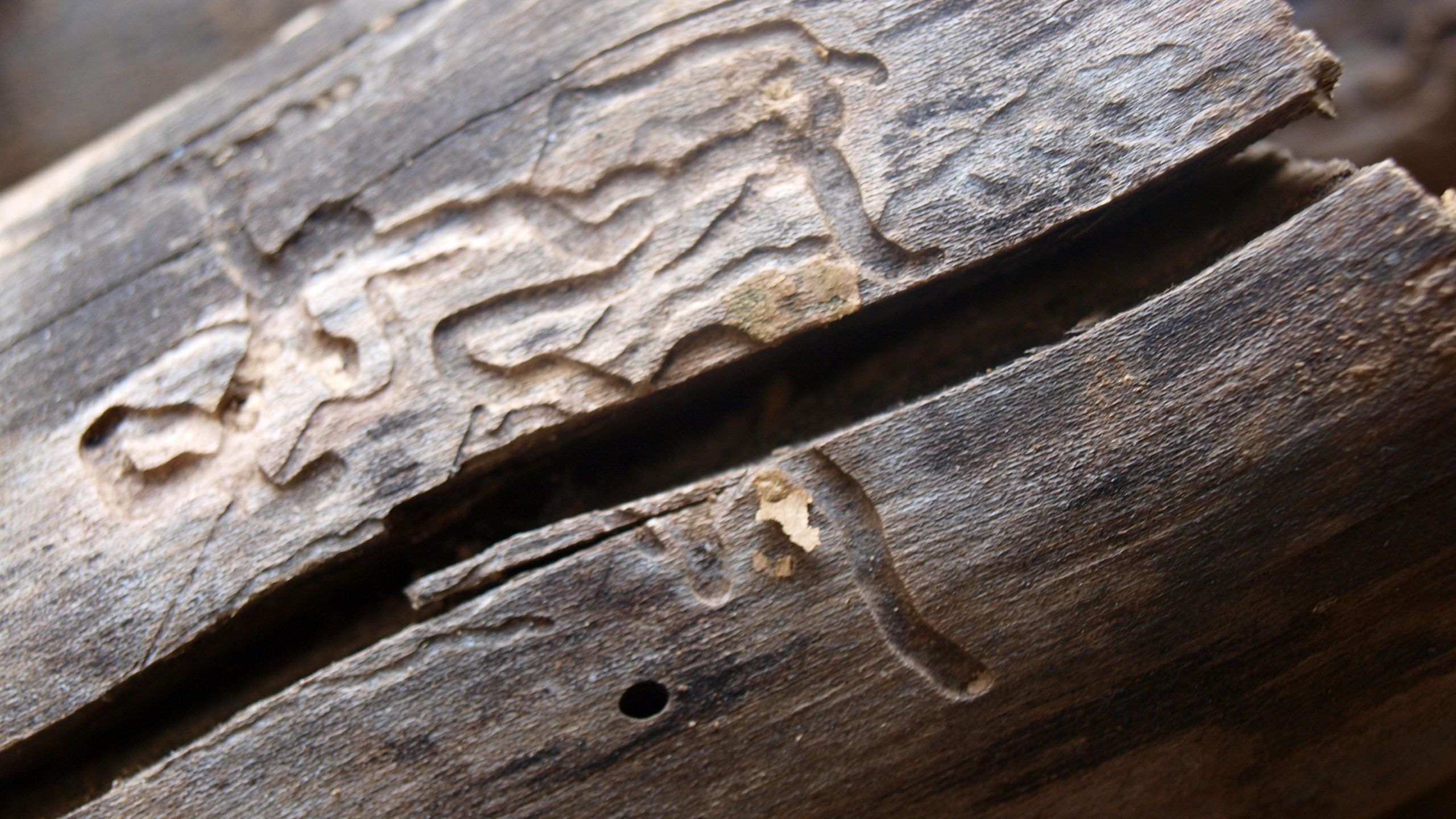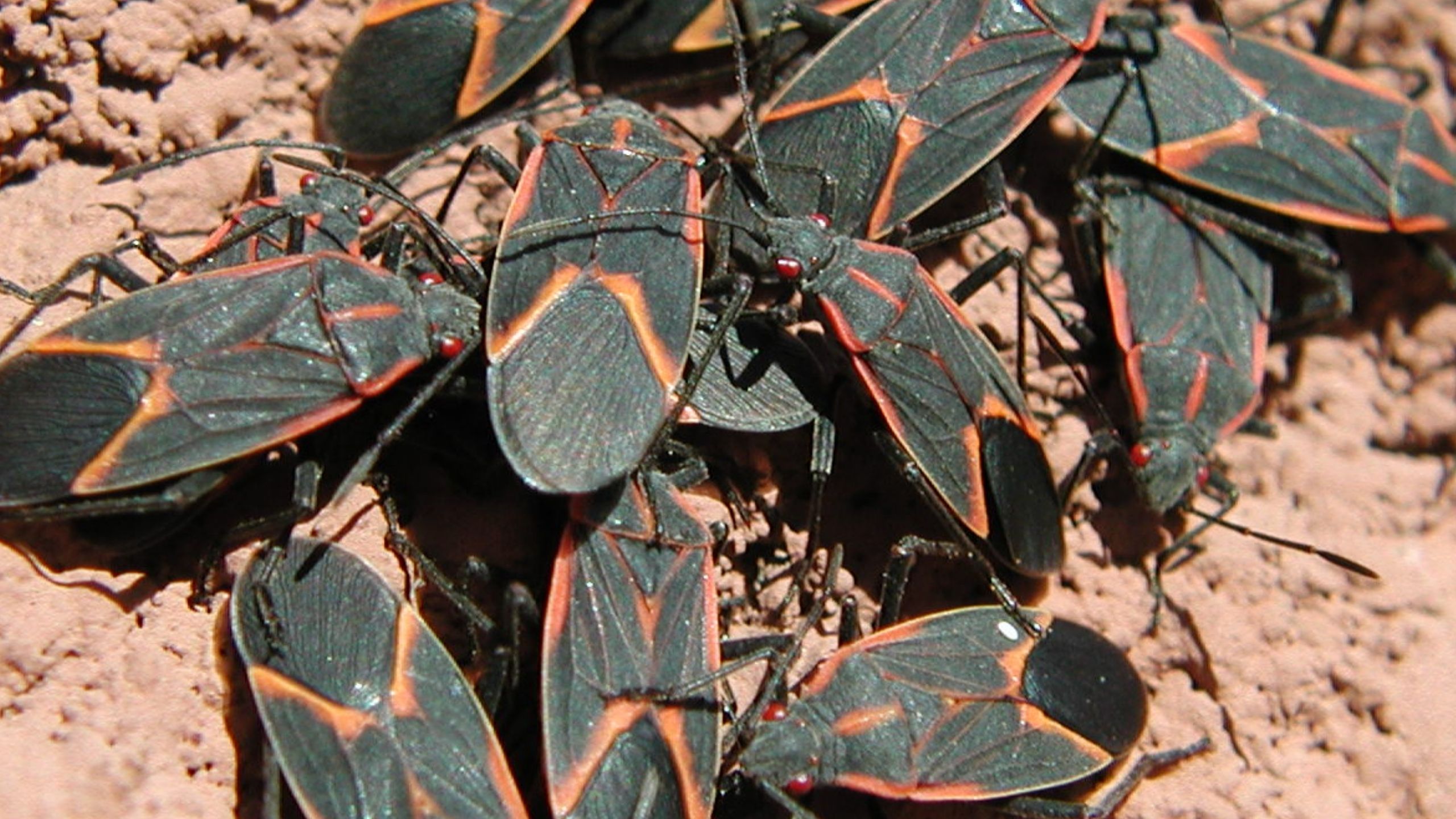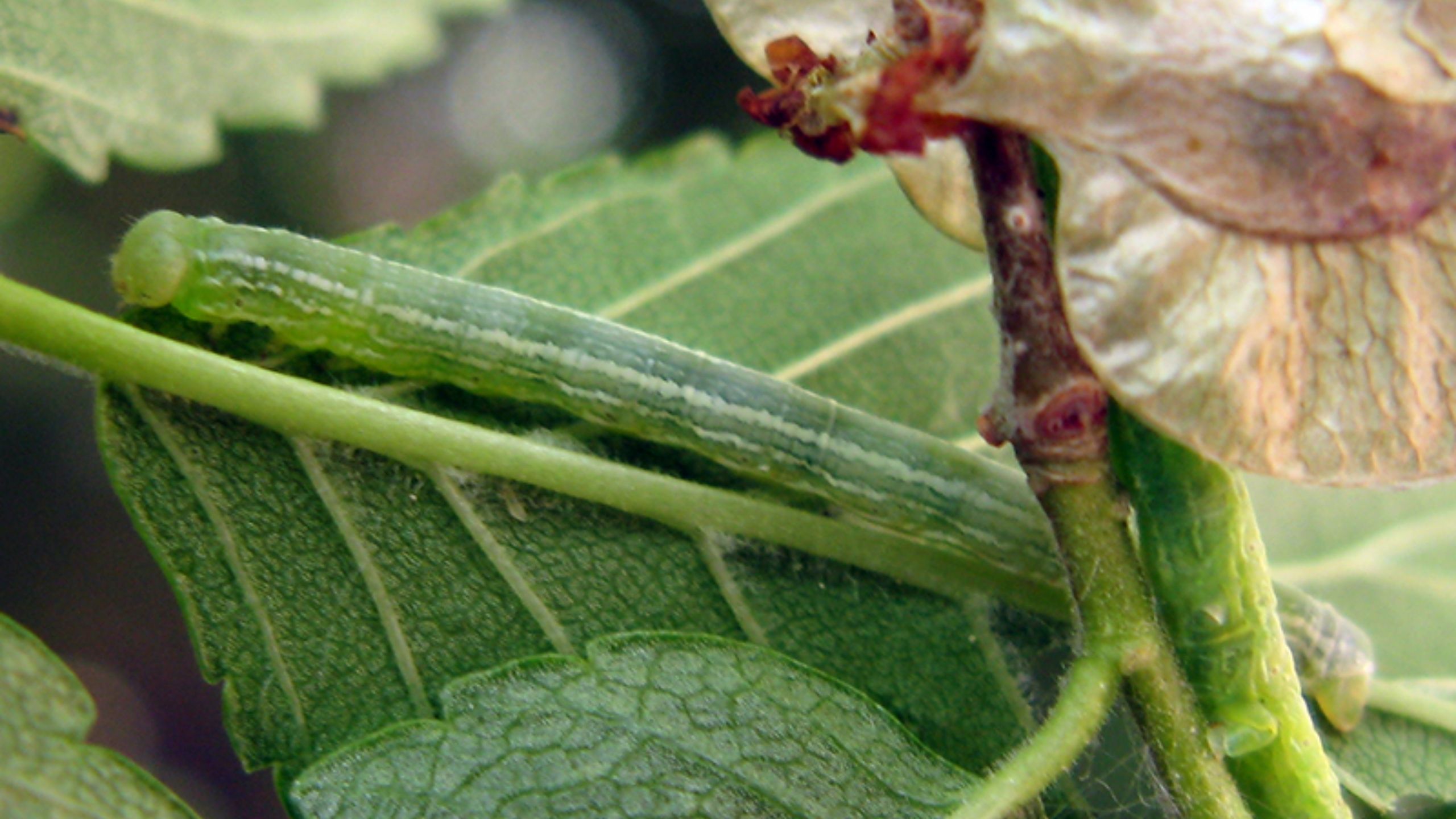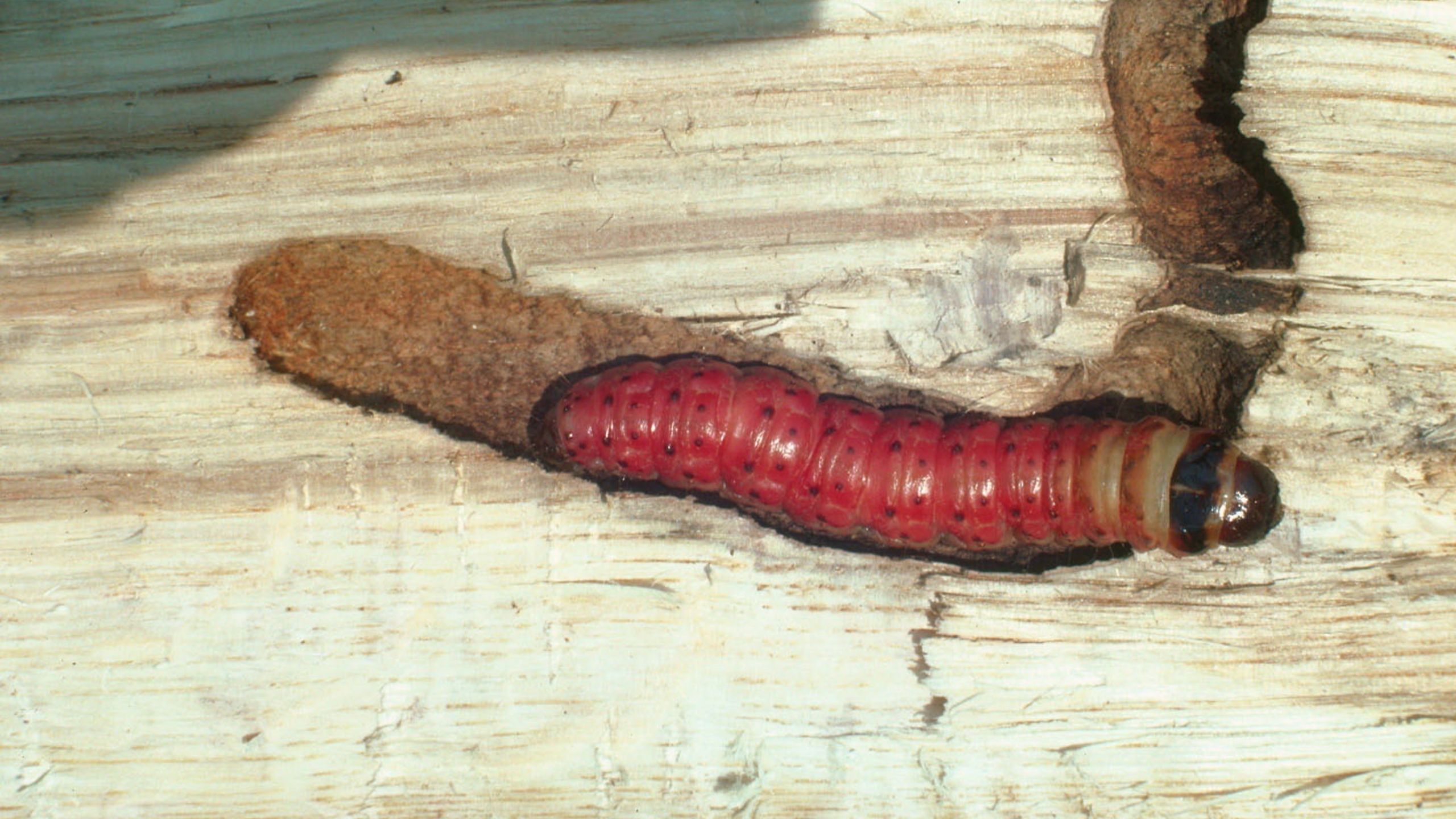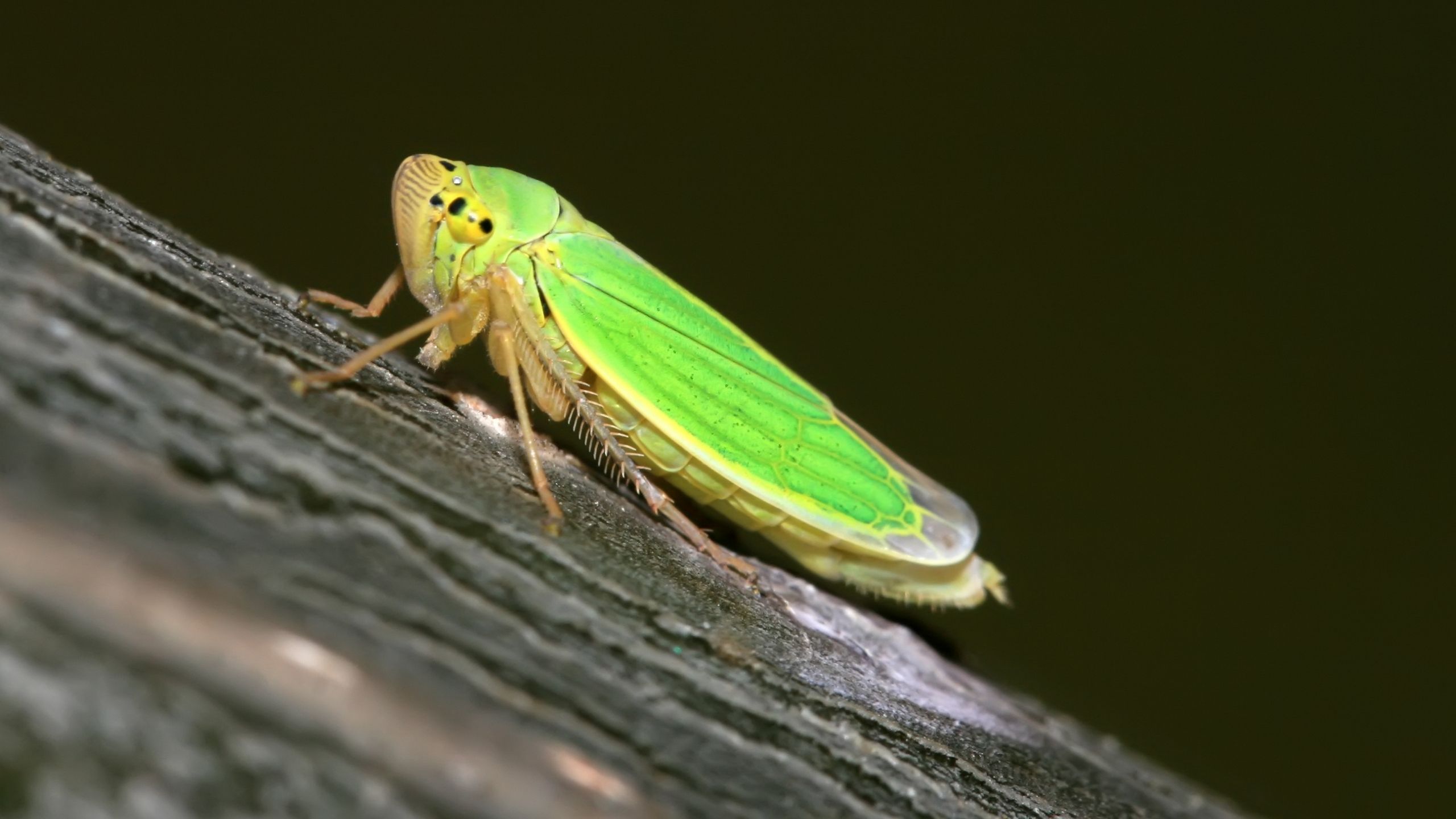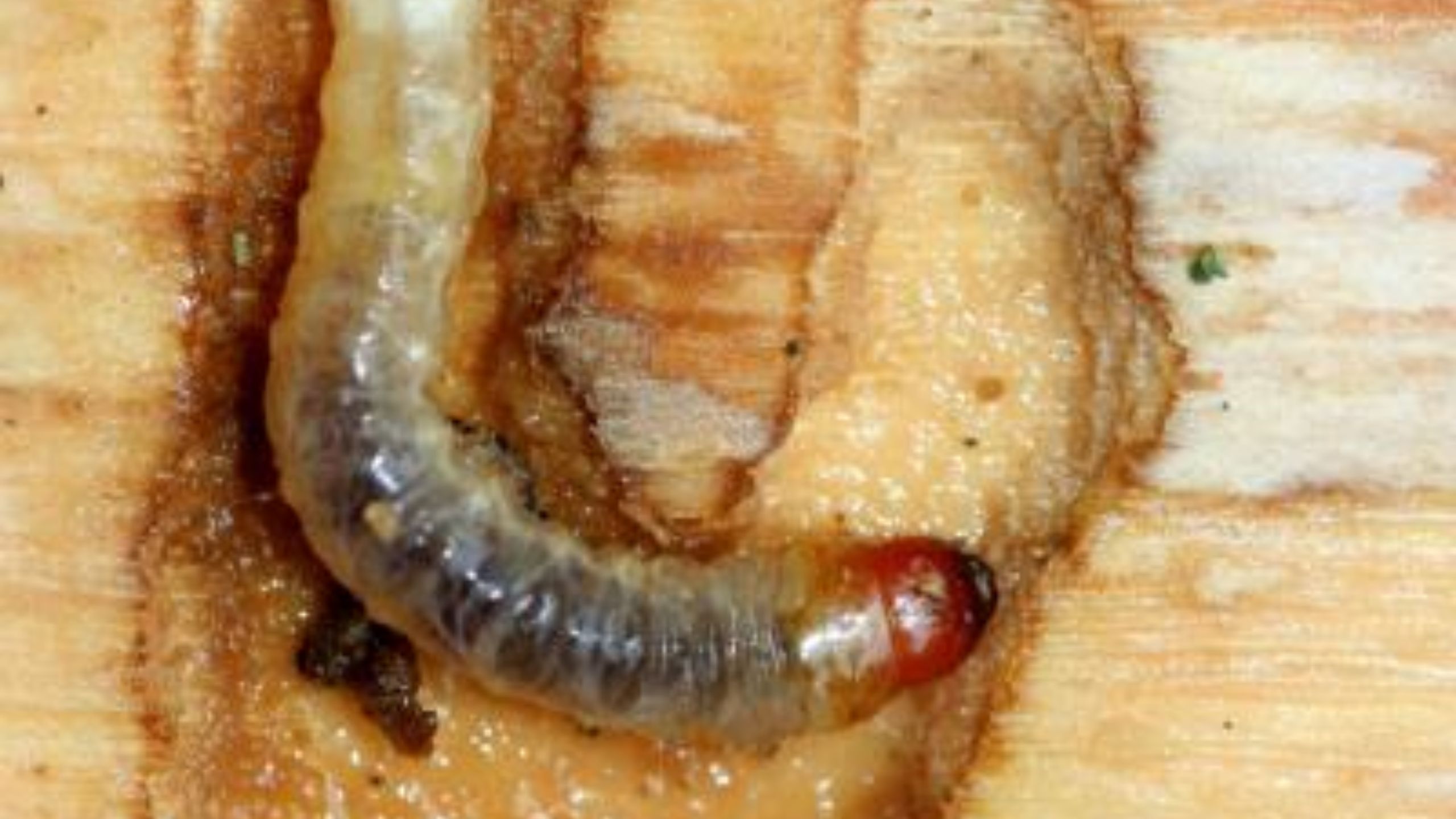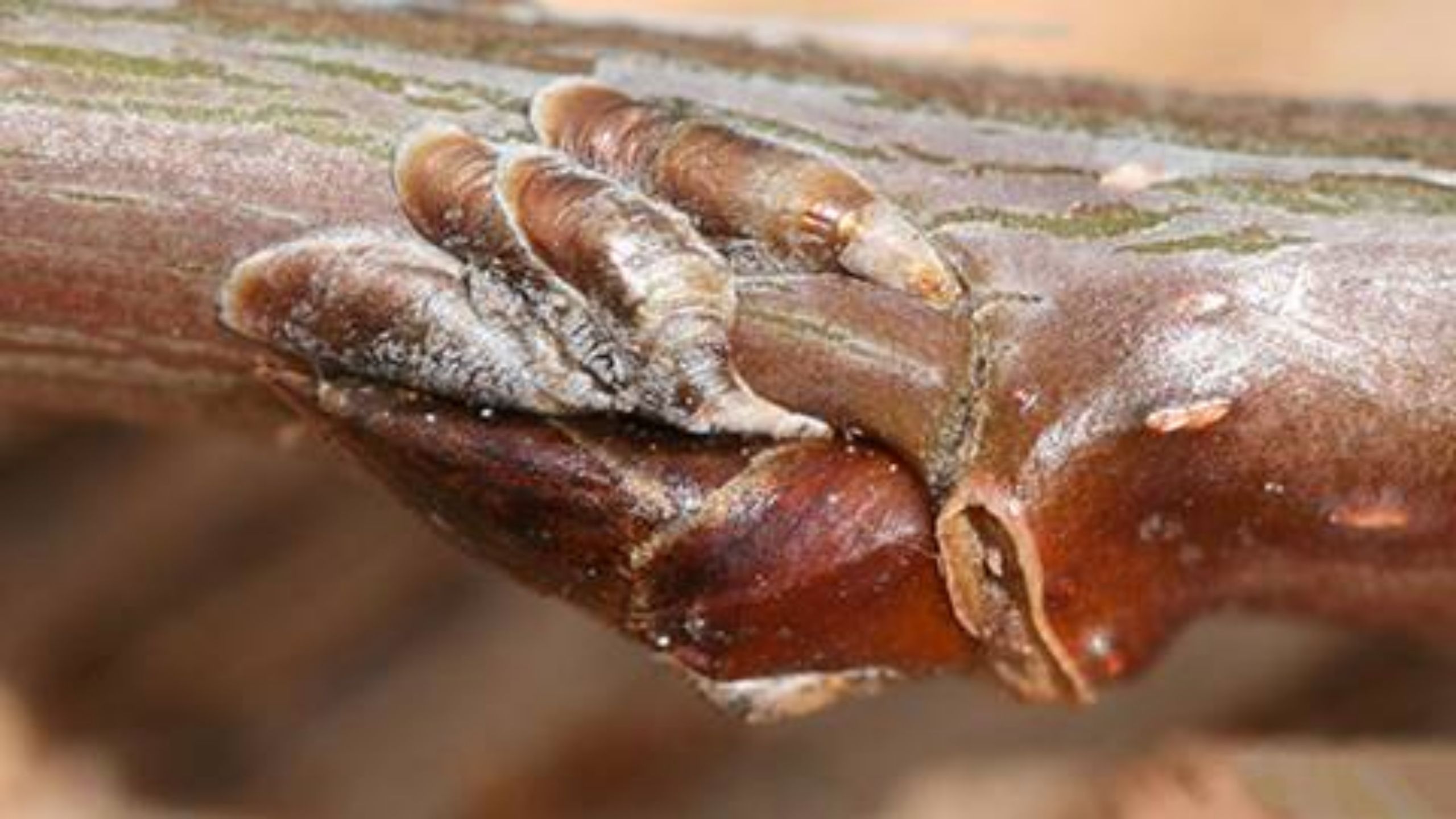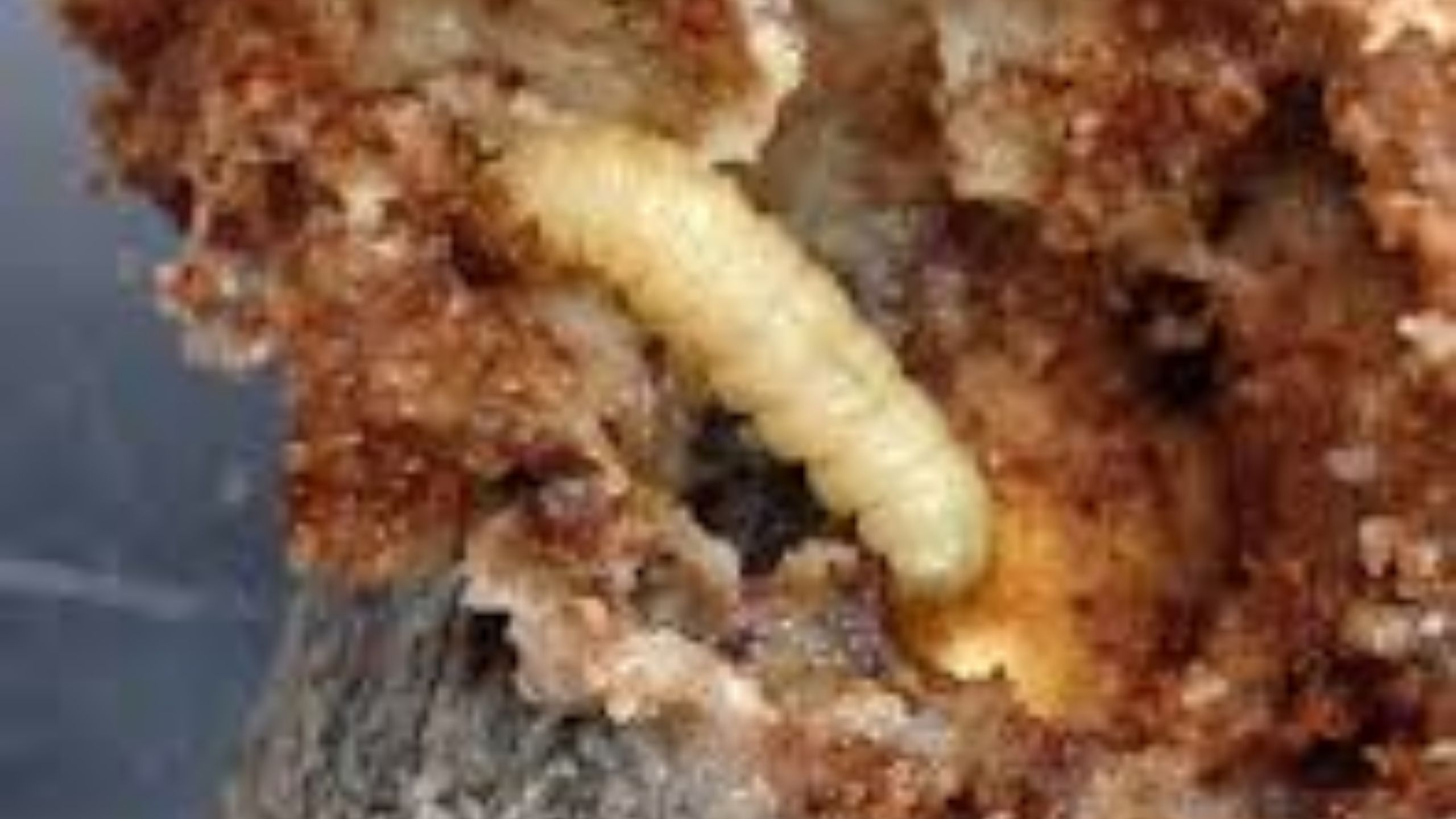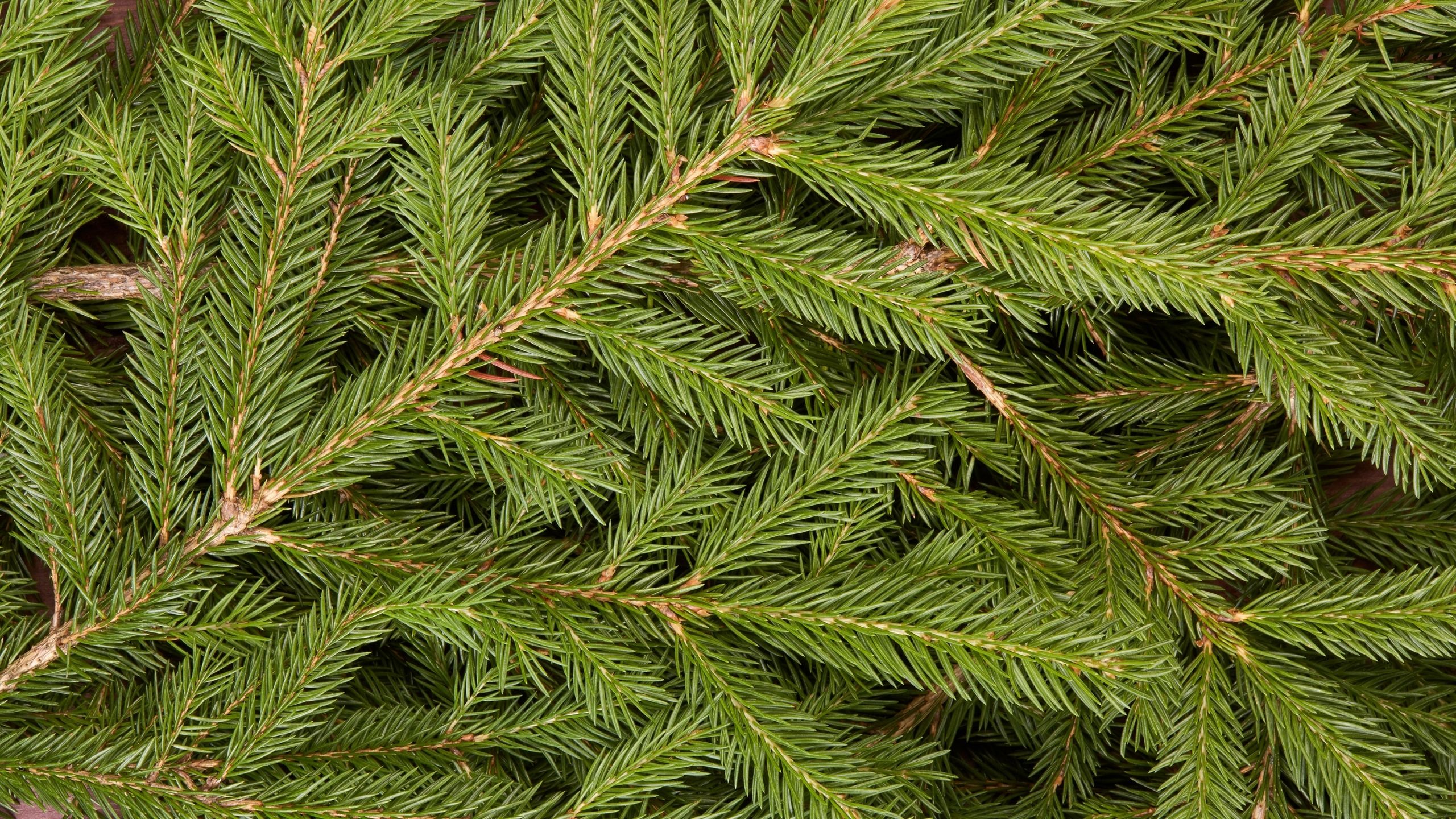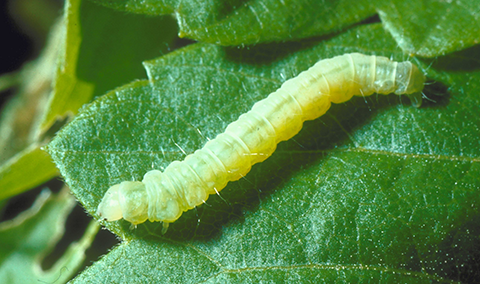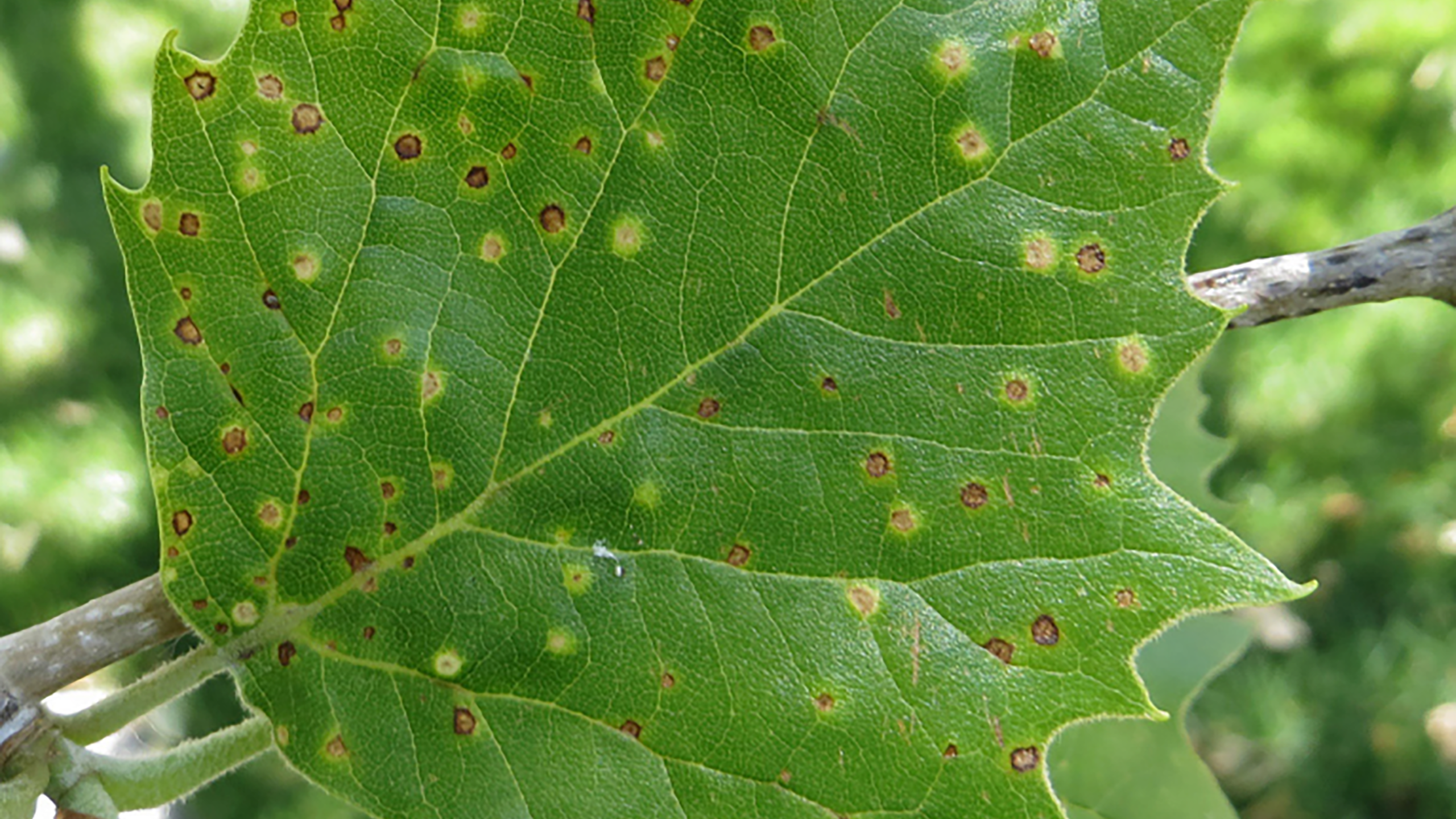Root Weevils
May 2018
Ryan Davis, Arthropod Diagnostician (No longer at USU)
Quick Facts
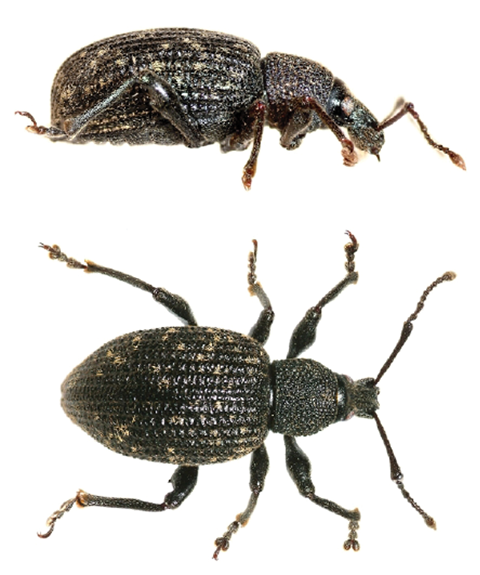
- Root weevils are a group of small, black-to-brown weevils that commonly damage ornamental and small fruit plants in Utah.
- Adult root weevil damage is characterized by marginal leaf notching and occasional feeding on buds and young shoots.
- Larval root weevil damage occurs below ground; damage to roots can lead to canopy decline or plant death.
- Root weevils are occasional nuisance pests in homes and structures mid-summer through fall.
- Manage root weevil larvae by applying a systemic insecticide to the soil around host plants April through September.
- Adults feeding on the above-ground portion of plants can be targeted with pyrethroid pesticides starting in late June or early July.
Introduction
The black vine weevil (Otiorhynchus sulcatus), lilac root weevil (O. meridionalis) strawberry weevil (O. ovatus) and rough strawberry root weevil (O. rugosostriatus) are a complex of non-native, snoutnosed beetles (Coleoptera: Curculionidae) that cause damage to ornamentals and small fruit crops in Utah. Root weevils are occasional nuisance pests indoors mid-summer through fall. Root weevils are common pests in North America; however, none of the 17 species found in North America are native. Introductions have occurred from various regions of Europe, northern Africa, and northern Asia.
Identification
Root weevils are small beetles ranging in length from about 1/4 to 1/3 inch depending on species. Coloration is variable, but the commonly encountered species in Utah are black with gold flecks (black vine weevil) or solid brown to black, shiny or matte. As a member of the weevil family (Curculionidae), these pests have a snout, but it is shortened and rectangular compared to other weevils that have long, skinny mouthparts. Members of the Otiorhynchus genus have fused outer wings and do not fly. Adult weevils will often drop from plants to the ground if they are approached.

Larvae are nearly identical in appearance to bark beetle and billbug larvae. Larvae range in size from about 1/16 to 1/4 inch in length. They do not have legs and they have a light brown head capsule. Larvae are found at the base of host plants feeding on roots within the soil.
Life History and Habits
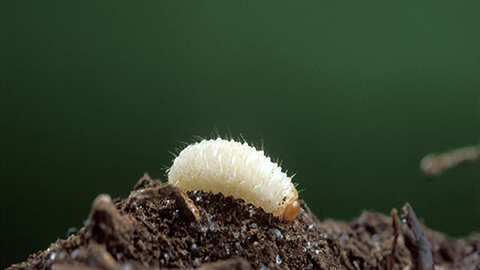
Root weevils have one generation per year. While some adults may overwinter, the majority of the population overwinters as larvae in the soil around host plants. When soil temperatures warm in the spring, larval feeding resumes and larvae continue to grow until they pupate in late May or early June. Adults emerge around mid-June and begin feeding. By late June and early July, adults begin laying eggs in the soil around host plants, which will hatch into the larvae that eventually overwinter.
During the day, root weevils hide around the base of plants in mulch, soil, etc. In Utah, root weevils feed on many plants - over 100 species. Some of the most frequently affected plants are lilac, strawberry, raspberry, privet, spruce, rose, and grape. Many lilacs in Utah exhibit the classic marginal (outside edge) leaf notching created during nighttime feeding. Adults may also feed on buds and young shoots.
Feeding by the larval stages below ground on plant roots can cause canopy decline and may lead to plant death. Larval root feeding is most severe prior to pupation in late May and early June.
Root weevil adults are also frequently found crawling around, or dead, in homes and structures from mid-summer through fall. Indoors, these insects are nuisance pests and will not harm people, pets or damage stored food products, etc.
Management
Management of root weevils is focused primarily on larvae in the soil and adults on the host plant or hiding on the ground near the base of the plant. Plants that showed marginal leaf notching in previous years will likely have damage the following year.
Chemical Control:
Larvae Larvae in the soil can be targeted April through September with a systemic insecticide (Imidacloprid) applied within the host plant root zone. To reduce adult damage and subsequent populations, apply from April to late May to kill overwintering larvae before they pupate. If a biological approach is desired, target weevil larvae (and pupae) with nematodes (Heterorhabditis spp. or Steinernema spp.) in the spring when soil temperatures are at least 60F, or in late June and early July when root weevil eggs begin to hatch.
When applying nematodes, or systemics, ensure that the soil is moist (but not over irrigated) prior to application and for at least 2 weeks postapplication. Clear organic material (grass, mulch, landscape fabric, etc.) away from the application before applying the product. When applying nematodes, apply in the early morning or evening to avoid high temperatures. Nematode efficacy may vary depending on the nematode species used, the target weevil species, site conditions (especially soil temperature and moisture), weevil developmental stage, nematode handling, storage, and other factors.

Cultural Control: Adults
Because adults do not fly, banding host-plant stems with Tanglefoot (a gluelike substance), or a similar insect barrier product, can keep adults from crawling into the canopy to feed. For this to work, plants must be pruned so no branches are touching the ground, other plants or objects which are not banded. Banding dense, multi-stemmed plants, like some lilacs, could be difficult.
Do not apply Tanglefoot or similar products directly to the plant tissues. Always wrap the plant’s stem with Tangle Guard or a similar banding material and apply the sticky substance to the outside of the material. Plants should be banded prior to adult emergence (late May, for northern Utah). Bands can be removed in the fall but will need to be maintained throughout the growing season as they become full, dirty or lose stickiness.
Chemical Control:
Adults To manage adult weevils begin monitoring for marginal leaf notching in June. Adults can be found on the plant at night, using a flashlight, or during the day by searching in the soil, mulch, ground cover, etc., in vicinity of the plant stem.
Pyrethroids (beta-cyfluthrin, bifenthrin, cyfluthrin, permetrin, etc.) applied to the foliage where adults feed, to the stem where they travel, or to the ground around the stem where weevils hide during the day can effectively control adults. Always read the pesticide label and avoid foliar applications during bloom.
Adult weevils that enter structures can be vacuumed or removed. Pesticides are not recommended for management of nuisance weevils within a structure. Exclusion and alteration of habitat around a structure, such as planting non-host plants and reducing moisture, can reduce local weevil populations. Appropriately labeled pyrethroid insecticides can be applied to the foundation and ground in problem areas to reduce adult entry.
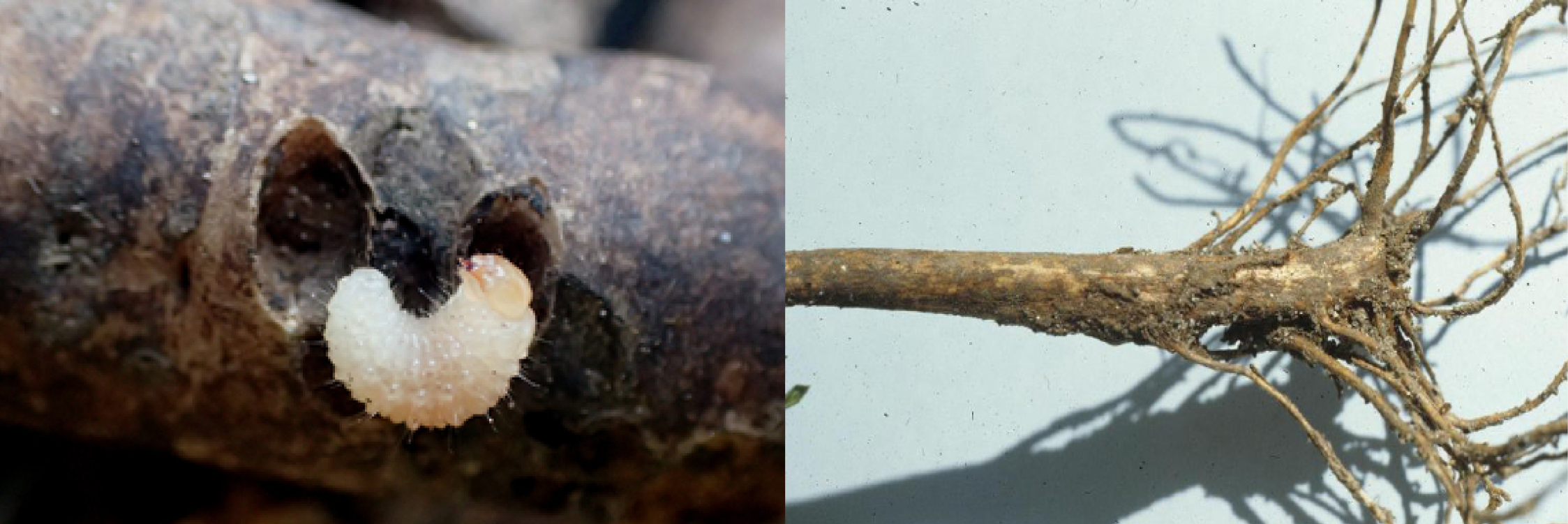
References
- Booth, S.R., Tanigoshi, L.K. and Shanks, C.H., Jr. 2002. Evaluation of Entomopathogenic Nematodes to Manage Root Weevil Larvae in Washington State Cranberry, Strawberry, and Red Raspberry.
- Cranshaw, W.S. 2004. Garden Insects of North America: The Ultimate Guide to Backyard Bugs. Princeton University Press. Pgs.: 532-537.
- Cranshaw, W.S. 2016. Root Weevils.
- Johnson, W.T., and Lyon, H.H. 1991. Insects That Feed on Trees and Shrubs. Cornell University Press. Pgs.: 240-245.
- Long, S.J., Richardson, P.N., and Fenlon, J.S. 2000. Influence of Temperature on the Infectivity of Entomopathogneic Nematodes (Steinernema and Heterorhabditis spp.) to Larvae and Pupae of the Vine Weevil Otiorhynchus sulcatus (Coleoptera: Curculionidae). Nematology, Vol. 2(3): 309-317.
Related Research



